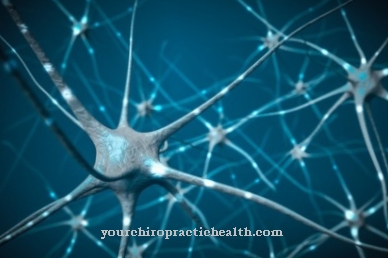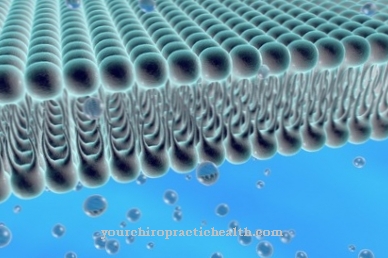The human organism consists to a large extent of water. That is why daily fluid intake and a good water balance are of great relevance. Water has various functions in the body and is irreplaceable.
What is the water balance?

The proportion of water in the human body depends largely on age. Infants have a share of 75 percent, while it decreases with advancing years and makes up around 65 percent in an adult. This is around 45 liters on average. Seniors, on the other hand, have 50 percent water at their disposal.
The decrease in fluid in the organism is related to the increase in fat cells and a restructuring of the connective tissue. 70 percent of the fluid remains inside cells, while 30 percent is outside of the cell membrane. For example, the brain, blood, liver and muscles all need a lot of water.
The term “water balance” describes both the absorption of the fluid and the release, as it occurs, for example, via urination (micturition) and sweating. The water is mainly absorbed through drinks and food.
After a while, the water has to be channeled out of the body, as the body releases various metabolic products into the water, such as urea and salt. In order to keep the water balance constant, you have to drink enough. It is estimated that adults lose 1.5 liters in 24 hours. This value can increase depending on external factors such as high temperature.
Function & task
The water takes on numerous functions. The largest part is used to transport various nutrients. With the help of the water, these can penetrate to the individual cells and supply them. The fluid is also required to flush various breakdown products out of the body. These are first passed on to the blood vessels and kidneys and then removed. Some end products of the metabolism can only dissolve if there is sufficient water. Insufficient intake can thus result in complaints.
In general, water is a means of transport in the human body. In addition, it regulates the body temperature, which varies from person to person and should be constant between 36 - 37 ° C. The temperature can be changed by various factors, such as climatic conditions. So that the body's warmth does not change, the temperature can be regulated with the help of sweating.
Because it is only possible for humans to function physically within a certain temperature range, sweating is a vital process.
Even at temperatures above 41 degrees there is a risk of heat stroke, which can result in death.
About two million sweat glands can be located on the skin throughout the body. Physical movement generates heat, which has to be channeled outside so that the body does not overheat. First of all, sweat is excreted and distributed. As soon as the liquid film evaporates due to the body temperature, there is evaporation cooling.
The brain constantly takes care of the correct temperature by checking it and adjusting it with the help of receptors if necessary. The amount of sweat released is therefore directly dependent on the duration and intensity of a sporting session, the ambient temperature or the level of a fever.
You can find your medication here
➔ Medication for sleep disordersIllnesses & ailments
Ideally, there is a balance between fluid intake and excretion. There is talk of the water balance. If, for example, exercise leads to increased water release and this is not balanced, dehydration is possible. The dehydration results in various symptoms such as palpitations, muscle cramps and loss of consciousness. In particularly severe cases, death cannot be ruled out.
In general, dehydration can affect everyone at different stages of life. In contrast to children and the elderly, however, adults are relatively less sensitive to water loss. If the body lacks water, deficiency symptoms also become noticeable due to a lack of sodium, potassium, magnesium and calcium. Accordingly, athletes should ensure that their water balance is replenished generously after each session. The same applies to particularly warm temperatures, which lead to increased sweat loss.
If dehydration has already set in, those affected should take small sips of water to avoid further symptoms.
In addition to dehydration, there is also hyperhydration. This is also an unbalanced water balance, as the excess water is greater than that of the salt. Such a condition can be triggered, for example, by kidney or heart failure. In addition to edema, weight gain is also noticeable.
In the case of hypokalaemia, sufficient water is supplied, but this is also increasingly lost through the intestines in the form of diarrhea or due to vomiting. Those affected suffer from arrhythmias and muscle weakness.
The measurement of laboratory values and pH value can provide information and assess the state of health. If there is a disturbance in the water balance, further symptoms can follow. It is therefore important that the underlying cause is always treated or prevented. Otherwise, a water balance that is out of balance has a negative influence on various body functions.
In addition to an increased deposit of cholesterol, such a condition also affects blood sugar or blood pressure. Too much cholesterol narrows the blood vessels and can lead to a heart attack. The best prevention is to start with adequate water intake.













.jpg)

.jpg)
.jpg)











.jpg)